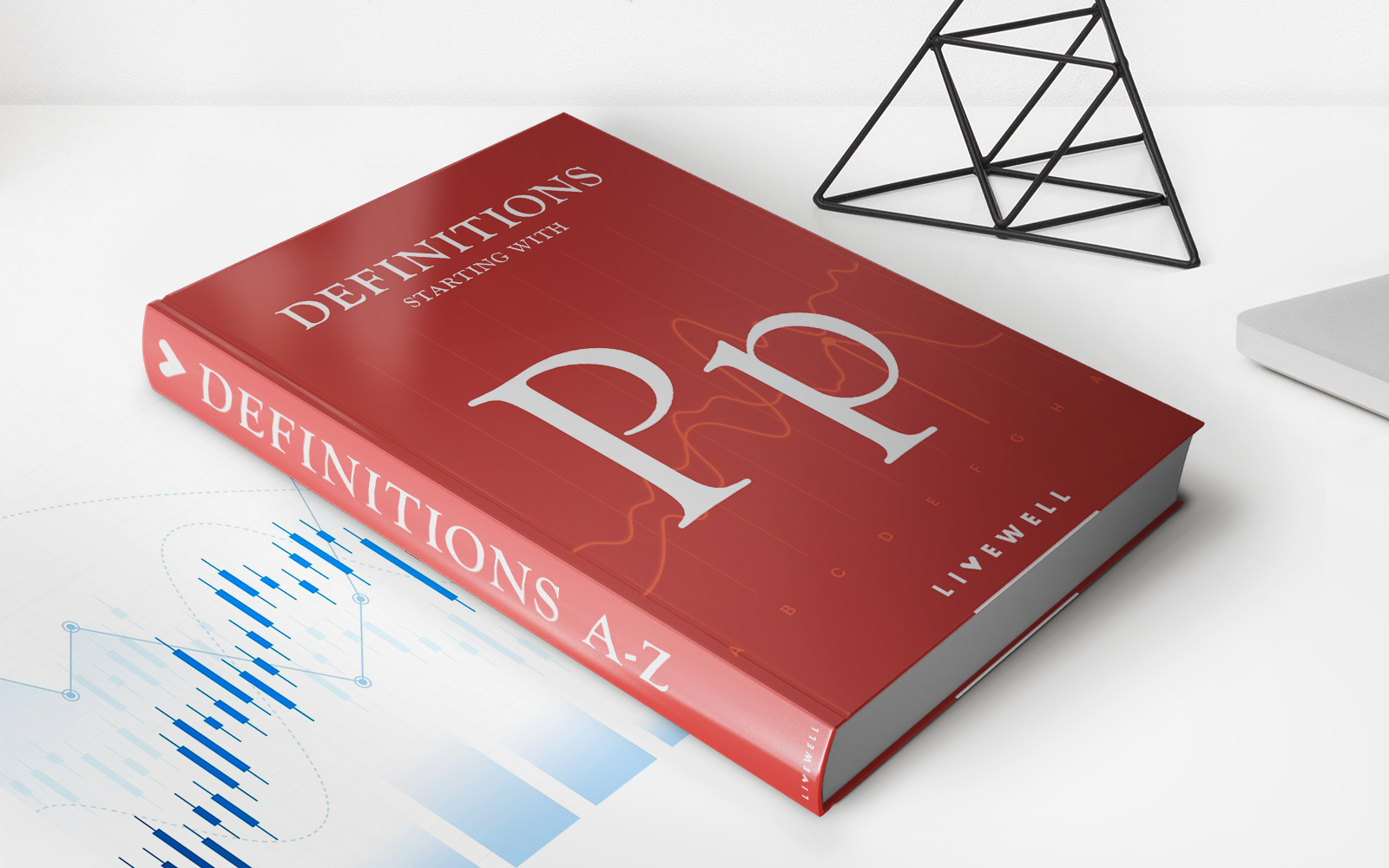Home>Finance>What Conditional Approval For A Personal Loan Means


Finance
What Conditional Approval For A Personal Loan Means
Modified: February 21, 2024
Learn what conditional approval for a personal loan means in the world of finance. Get insights and understanding on this crucial step in your loan application process.
(Many of the links in this article redirect to a specific reviewed product. Your purchase of these products through affiliate links helps to generate commission for LiveWell, at no extra cost. Learn more)
Table of Contents
- Introduction
- What is Conditional Approval for a Personal Loan?
- How Does Conditional Approval Differ from Final Approval?
- The Process of Obtaining Conditional Approval
- Factors Considered During Conditional Approval
- Benefits and Limitations of Conditional Approval
- Documents and Requirements for Conditional Approval
- Understanding the Terms and Conditions
- Next Steps After Receiving Conditional Approval
- Importance of Clearing Conditions for Final Approval
- Conclusion
Introduction
Welcome to the world of personal loans, where individuals have the opportunity to secure the funds they need for various purposes, whether it’s consolidating debt, financing a home improvement project, or covering unexpected expenses. When applying for a personal loan, you may come across the term “conditional approval.” But what exactly does it mean?
Conditional approval is an important step in the loan application process. It is a preliminary evaluation of your financial situation and creditworthiness to determine if you meet the initial requirements for a personal loan. While conditional approval is not the final approval, it represents a significant milestone towards securing the loan.
In this article, we will delve into the specifics of conditional approval for a personal loan, including what it entails, how it differs from final approval, and the steps involved in obtaining it.
We will also explore the factors considered during conditional approval, the benefits and limitations of this stage, the necessary documents and requirements, as well as the importance of understanding the terms and conditions associated with the loan.
So, whether you’re considering applying for a personal loan or are currently in the conditional approval stage, this article will provide you with a comprehensive understanding of the process and help you navigate your way towards securing the funds you need.
What is Conditional Approval for a Personal Loan?
Conditional approval for a personal loan is a preliminary assessment carried out by lenders to determine if an individual meets the initial requirements for obtaining the loan. It is an indication that the lender is likely to approve the loan, pending the fulfillment of certain conditions.
During the conditional approval stage, the lender assesses various factors such as the borrower’s credit history, income, employment stability, and debt-to-income ratio. This evaluation helps the lender gauge the borrower’s ability to repay the loan and assess the level of risk involved.
Conditional approval is different from final approval, as it is not a binding commitment from the lender to provide the loan. Instead, it serves as an indication that the borrower has met the initial qualifying criteria and is likely to receive final approval, subject to meeting specific conditions.
The conditions for conditional approval may vary depending on the lender and the individual’s financial circumstances. Some commonly required conditions include providing additional documentation, verifying income or employment details, or satisfying specific credit requirements.
It’s essential to note that conditional approval is not a guarantee that the loan will be approved in its entirety. It is merely a positive indication that the lender is willing to move forward with the loan, pending the resolution of any outstanding conditions.
Conditional approval provides borrowers with an early understanding of their eligibility for a personal loan and the terms that may be offered. It allows individuals to confidently proceed with their financial plans, knowing that they are one step closer to securing the funds they need.
However, it’s important to recognize that conditional approval is not the final step in the loan approval process. Borrowers must fulfill all the specified conditions and receive final approval to ensure the loan is officially granted.
In the following sections, we will explore the process of obtaining conditional approval, the factors evaluated during this stage, and the necessary documentation and requirements that borrowers need to fulfill.
How Does Conditional Approval Differ from Final Approval?
Conditional approval and final approval are two distinct stages in the personal loan application process, each serving a different purpose and carrying varying levels of commitment from the lender.
Conditional approval is an initial evaluation conducted by the lender to determine if an individual meets the basic requirements for a personal loan. It serves as an indication that the borrower is likely to receive final approval, pending the fulfillment of specific conditions.
Final approval, on the other hand, is the last step in the loan approval process. It signifies that the lender has thoroughly reviewed the borrower’s financial information, documentation, and creditworthiness, and has made a binding commitment to provide the loan.
The main differences between conditional approval and final approval include:
- Commitment: Conditional approval is not a binding commitment from the lender. It represents a preliminary evaluation and an indication that the borrower has met the initial requirements. Final approval, on the other hand, is a formal agreement by the lender to provide the loan.
- Conditions: Conditional approval is granted with specific conditions that need to be met by the borrower. These conditions may include providing additional documentation, verifying income or employment details, or satisfying certain credit requirements. Final approval does not come with conditions since it signifies that all requirements have been addressed and met.
- Timeframe: Conditional approval is typically obtained before final approval and serves as an intermediate stage in the loan approval process. Final approval comes after fulfilling the conditions and can take longer as it involves a comprehensive review of the borrower’s financial profile.
- Loan Terms: During the conditional approval stage, borrowers may receive preliminary loan terms, including the loan amount, interest rate range, and repayment period. These terms are subject to change based on final approval and may vary depending on the borrower’s financial situation. Final approval provides definitive loan terms that are binding and cannot be altered without mutual agreement between the lender and the borrower.
It’s important for borrowers to understand the distinction between conditional approval and final approval to set realistic expectations throughout the loan application process. While conditional approval is a positive indication of eligibility, it does not guarantee the loan will be granted. Fulfilling the specified conditions is crucial for progressing towards final approval and securing the loan.
In the next section, we will discuss the process involved in obtaining conditional approval for a personal loan.
The Process of Obtaining Conditional Approval
Obtaining conditional approval for a personal loan involves a series of steps that borrowers need to navigate in order to move closer to final approval. While the exact process may vary depending on the lender, the following outlines a general overview of what to expect:
- Research and Application: The process begins by researching and comparing different lenders to find the one that best fits your needs. Once you’ve chosen a lender, you’ll need to complete a loan application, either online or in-person. This application will require personal information, financial details, and the purpose of the loan.
- Preliminary Evaluation: After submitting the application, the lender will review your information to determine if you meet the initial eligibility criteria. This evaluation typically includes considerations such as credit score, income, employment stability, and debt-to-income ratio.
- Conditional Approval: If you meet the initial requirements, the lender will grant conditional approval. This means that based on the information provided, you are likely to receive final approval, contingent on fulfilling certain conditions.
- Conditions: The lender will specify the conditions that need to be met for final approval. These conditions may include providing additional documentation, such as bank statements, pay stubs, or tax returns, or verifying employment or income details. It is essential to carefully review these conditions and ensure a clear understanding of what is required.
- Documentation Submission: Once you’ve received your conditional approval and understand the conditions, you will need to gather and submit the necessary documentation. This ensures that the lender has all the information required to proceed with the loan application.
- Review and Verification: The lender will thoroughly review the documentation you’ve submitted to verify its accuracy and authenticity. They may also conduct further checks, such as employment or income verification, to ensure the information provided is reliable.
- Decision and Final Approval: Upon satisfactory review of the documentation and fulfillment of the specified conditions, the lender will make a final decision on the loan application. If everything meets their requirements, final approval will be granted, and you will move forward to the next steps in the loan process.
It’s important to note that the time required to obtain conditional approval and progress towards final approval can vary depending on several factors, including the complexity of the loan, the lender’s internal processes, and the responsiveness of the borrower in fulfilling the specified conditions.
In the following sections, we’ll explore the factors considered during the conditional approval stage, the necessary documents and requirements, and the importance of understanding the terms and conditions associated with the loan.
Factors Considered During Conditional Approval
When applying for a personal loan, lenders evaluate various factors to determine your eligibility and assess the level of risk involved. During the conditional approval stage, these factors are carefully considered to gauge your financial situation and creditworthiness. The following are key factors that lenders typically take into account:
- Credit History: One of the primary factors lenders assess is your credit history. They will review your credit score and credit report to determine your payment history, outstanding debts, and any delinquencies or defaults. A strong credit history demonstrates responsible borrowing and increases your chances of receiving conditional approval.
- Income and Employment Stability: Lenders want assurance that you have a stable income and the financial means to repay the loan. They will evaluate your income sources, employment history, and job stability. A steady and sufficient income plays a significant role in obtaining conditional approval.
- Debt-to-Income Ratio: Your debt-to-income ratio compares your total monthly debt obligations to your monthly income. Lenders use this ratio to assess your ability to handle additional debt. A lower debt-to-income ratio indicates a stronger financial position and improves your chances of receiving conditional approval.
- Purpose of the Loan: Lenders may consider the purpose of the loan when evaluating your application. Some loan types, such as home improvement or debt consolidation loans, may be viewed more favorably as they serve specific financial objectives. Sharing a clear and compelling purpose for the loan can strengthen your case for conditional approval.
- Collateral: If you’re applying for a secured loan, such as a car loan or a home equity loan, the collateral you provide will be assessed. Lenders will evaluate the value and condition of the collateral to determine the loan amount and terms. The quality of the collateral can impact the likelihood of receiving conditional approval.
It’s important to note that while these factors play a significant role in evaluating your loan application, each lender may have different criteria and weightage assigned to these factors. Therefore, it’s crucial to research and understand the lender’s specific requirements before applying for a personal loan.
Additionally, having a strong credit score, stable income, and a low debt-to-income ratio can significantly improve your chances of receiving conditional approval. It’s advisable to review your credit report, address any inaccuracies, and make efforts to improve your financial profile before applying for a personal loan.
In the next section, we will explore the necessary documents and requirements typically asked for during the conditional approval process.
Benefits and Limitations of Conditional Approval
Conditional approval for a personal loan offers several benefits to borrowers, but it also comes with certain limitations. Understanding these advantages and limitations is crucial for borrowers who have received conditional approval. Let’s explore them in more detail:
Benefits of Conditional Approval:
- Early Indication of Eligibility: Conditional approval provides borrowers with an early indication of their eligibility for a personal loan. It helps them gauge their chances of receiving final approval and proceed with their financial plans with greater confidence.
- Preliminary Loan Terms: Along with conditional approval, borrowers may receive preliminary loan terms, including the loan amount, interest rate range, and repayment period. These terms allow borrowers to make informed decisions and plan their finances accordingly.
- Efficiency in the Loan Process: Conditional approval streamlines the loan process by ensuring that borrowers meet the initial requirements before proceeding to the final approval stage. It helps save time and enables borrowers to focus on fulfilling the specified conditions for final approval.
- Enhanced Negotiation Power: Conditional approval can provide borrowers with increased negotiation power. Armed with the knowledge of their eligibility, borrowers can confidently negotiate loan terms and conditions with the lender to secure a more favorable loan offer.
Limitations of Conditional Approval:
- Subject to Conditions: Conditional approval is not a binding commitment from the lender. It is contingent on meeting specific conditions, which need to be fulfilled for final approval. Failure to satisfy these conditions may lead to the denial of the loan.
- Terms and Conditions May Change: The preliminary loan terms received during conditional approval are subject to change. Final approval involves a comprehensive review of the borrower’s financial profile, which may result in adjustments to the loan amount, interest rate, or repayment period.
- No Guarantee of Final Approval: Conditional approval does not guarantee final approval. It is an initial assessment that indicates you are likely to meet the lender’s requirements. Factors such as changes in financial circumstances or credit history during the conditional approval process can impact the final decision.
- May Have Expiry Date: Conditional approval may come with an expiration date. If the specified conditions are not fulfilled within the given timeframe, the conditional approval may become invalid, and borrowers may need to restart the loan application process.
Understanding the benefits and limitations of conditional approval helps borrowers set realistic expectations and take appropriate steps to move towards final approval. It’s crucial to carefully review the conditional approval letter or documentation provided by the lender to fully comprehend the conditions and next steps required for final approval.
In the next section, we will discuss the necessary documents and requirements typically asked for during the conditional approval process.
Documents and Requirements for Conditional Approval
When applying for a personal loan and seeking conditional approval, lenders typically require certain documents and information to assess your eligibility. While the specific requirements can vary depending on the lender and the type of loan, the following are commonly requested documents and information:
- Identification: You will typically need to provide a valid form of identification, such as a government-issued ID or passport, to verify your identity.
- Proof of Income: Lenders need to evaluate your income to assess your ability to repay the loan. They may require recent pay stubs, W-2 forms, or income tax returns to verify your income stability and level.
- Bank Statements: Providing recent bank statements helps lenders get a clearer understanding of your financial situation and cash flow. These statements show your savings, expenses, and any existing financial obligations.
- Employment Details: Lenders will typically ask for information about your current employment, including your job title, employer’s contact information, and the length of employment. This helps them assess the stability of your income source.
- Proof of Residence: Lenders may request documents that verify your residential address, such as utility bills, rental agreements, or mortgage statements.
- Credit History: To evaluate your creditworthiness, lenders typically request access to your credit history and credit score. They may ask for permission to pull your credit report from one or more credit bureaus.
- Debt Information: You may be required to provide details about your existing debts, such as credit card balances, loan obligations, or outstanding mortgages. This information helps lenders assess your debt-to-income ratio.
- Purpose of the Loan: Depending on the lender, you might need to provide a clear explanation of the purpose of the loan. This helps them assess the risk and suitability of the loan for your intended use.
It’s important to submit accurate and up-to-date information and documentation to the lender. Any discrepancies or false information can jeopardize your chances of receiving conditional approval.
In addition to these documents, lenders may have specific requirements and additional documentation based on their internal policies and the loan program you are applying for. It’s advisable to check with the lender for a detailed list of requirements to ensure a smooth loan application process.
Once you have gathered all the necessary documents and information, you can submit them to the lender to proceed with the evaluation and conditional approval process. If all goes well and you receive conditional approval, you can then move on to understanding the terms and conditions associated with the loan, as we will discuss in the next section.
Understanding the Terms and Conditions
When you receive conditional approval for a personal loan, it’s crucial to take the time to thoroughly understand the terms and conditions associated with the loan. The terms and conditions outline the specific details of the loan agreement and play a significant role in determining its overall cost and repayment terms. Here’s what you need to consider:
- Interest Rate: The interest rate is the cost of borrowing the loan amount. It is important to understand whether the interest rate is fixed or variable and how it can impact your monthly payments and the total cost of the loan over time.
- Loan Amount: The loan amount is the principal sum that the lender is willing to provide. Make sure you understand the approved loan amount and whether it meets your financial needs.
- Repayment Terms: The repayment terms outline the specific structure and timeline for repaying the loan. It includes the number of monthly or biweekly payments, the repayment period, and the due dates. Review this information to ensure it aligns with your budget and financial capabilities.
- Fees and Charges: Examine the loan agreement for any fees or charges associated with the loan, such as origination fees, prepayment penalties, or late payment fees. Understanding these costs can help you determine the overall affordability of the loan.
- Early Repayment Options: If you plan to pay off the loan early, check if there are any penalties or restrictions associated with early repayment. Some loans may have prepayment penalties, while others may offer flexibility in early repayment without incurring additional charges.
- Credit Reporting: Ensure that you have a clear understanding of how your payment activity and loan information will be reported to credit bureaus. Timely payments can help improve your credit score, while late payments or defaults can negatively impact it.
- Default and Consequences: Familiarize yourself with the consequences of defaulting on the loan, such as the potential impact on your credit score, collection efforts, and legal actions that the lender may take to recover the funds.
Reviewing and understanding the terms and conditions is crucial to ensure that you are comfortable with the loan agreement and its implications. If there are any sections or clauses that you find confusing or unclear, don’t hesitate to seek clarification from the lender. It’s essential to have a complete understanding of the loan terms before accepting the offer and moving forward with the loan process.
Once you have a clear understanding of the terms and conditions and are comfortable proceeding, you can take the necessary steps to fulfill the conditions and move closer to final approval.
In the next section, we will discuss the next steps to take after receiving conditional approval for a personal loan.
Next Steps After Receiving Conditional Approval
After receiving conditional approval for a personal loan, there are several crucial steps you need to take to move forward in the loan application process. These steps will help you fulfill the specified conditions and progress towards final approval:
- Review the Conditions: Carefully review the conditions outlined in the conditional approval letter or documentation provided by the lender. Make sure you understand all the requirements and any additional documentation or information that needs to be submitted.
- Gather Additional Documentation: If any additional documentation is required, gather and organize the necessary paperwork. This may include bank statements, pay stubs, tax returns, or employment verification letters. Ensure that the documentation is accurate, up-to-date, and meets the lender’s requirements.
- Submit the Required Information: Provide the requested documentation and information to the lender within the specified timeframe. Ensure that all submissions are complete and accurate to avoid any delays or complications in the approval process.
- Follow Up with the Lender: Stay in touch with the lender to monitor the progress of your application. If there are any questions or concerns, address them promptly to ensure a smooth and timely evaluation process.
- Address any Outstanding Conditions: If there are any outstanding conditions that need to be fulfilled, take prompt action to address them. This may include providing additional documentation, clarifying information, or resolving any discrepancies that the lender may have identified.
- Be Patient: The process of fulfilling the conditions and receiving final approval may take time. Be patient and allow the lender sufficient time to review your application and documentation thoroughly. Avoid unnecessary follow-ups that may slow down the evaluation process.
- Prepare for Final Approval: While waiting for final approval, take the time to prepare for the next steps. Review the terms and conditions of the loan, assess your financial readiness for repayment, and make any necessary arrangements to ensure a smooth transition once final approval is granted.
It’s important to stay organized and proactive throughout this stage of the loan application process. By promptly fulfilling the conditions and maintaining open communication with the lender, you increase your chances of obtaining final approval.
Remember, conditional approval is not a guarantee of final approval. It is important to remain diligent and continue working towards meeting all the requirements to secure the loan successfully.
In the next section, we will discuss the importance of clearing conditions for final approval and the impact it has on the loan application process.
Importance of Clearing Conditions for Final Approval
Clearing the conditions set during the conditional approval stage is a crucial step towards obtaining final approval for a personal loan. Failing to fulfill these conditions may result in denial or delays in the approval process. Here’s why clearing conditions is important:
1. Progression towards Final Approval:
Fulfilling the conditions specified during conditional approval demonstrates your commitment and ability to meet the lender’s requirements. By clearing these conditions, you are one step closer to obtaining final approval and securing the loan.
2. Confirmation of Eligibility:
Clearing the conditions provides further confirmation of your eligibility for the loan. It confirms that you have met the necessary criteria and addressed any concerns or requirements specified by the lender during the conditional approval stage.
3. Assurance for the Lender:
Clearing the conditions reassures the lender that you are a qualified borrower who can meet the obligations of the loan. It allows the lender to have more confidence in lending to you and mitigates their risk, increasing the likelihood of final approval.
4. Smooth Loan Disbursement Process:
Clearing the conditions ensures a smoother loan disbursement process. Meeting all the requirements allows the lender to finalize the loan agreement, calculate the exact loan amount, and proceed with transferring the funds to you.
5. Avoidance of Delays or Denial:
If you fail to clear the specified conditions, it can lead to delays or even denial of the loan. Failing to address the conditions within the given timeframe can cause setbacks in the approval process and may require you to restart the loan application process from scratch.
6. Clarification of Expectations:
Clearing the conditions helps ensure that both you and the lender are on the same page regarding the terms and requirements of the loan. Addressing the conditions allows for a clear understanding of what is expected from both parties, creating a solid foundation for a successful loan agreement.
7. Moving Forward with Financial Plans:
By clearing the conditions and obtaining final approval, you can confidently move forward with your financial plans. Whether it’s consolidating debt, financing a home improvement project, or covering unexpected expenses, the loan funds will be available to help you achieve your goals.
It is essential to carefully review the conditional approval letter or documentation provided by the lender and promptly address any outstanding conditions. By doing so, you improve your chances of obtaining final approval and securing the personal loan successfully.
In the final section, we will conclude by summarizing the importance of understanding the conditional approval process and the next steps for borrowers.
Conclusion
Conditional approval is a crucial step in the personal loan application process, providing borrowers with an indication of their eligibility for a loan. It represents an initial evaluation by the lender, taking into account factors such as credit history, income, employment stability, and debt-to-income ratio. However, it is important to note that conditional approval is not a binding commitment from the lender.
Understanding the differences between conditional approval and final approval is essential. Final approval signifies a formal agreement by the lender to provide the loan, while conditional approval represents a preliminary assessment pending the fulfillment of specific conditions.
Throughout the loan application process, borrowers need to gather and submit the necessary documentation and information, fulfilling the conditions outlined during the conditional approval stage. By doing so, borrowers can progress towards final approval and ensure a smooth loan disbursement process.
Clearing the conditions set during the conditional approval stage is crucial for obtaining final approval. Fulfilling these conditions demonstrates your commitment and eligibility for the loan, reassuring the lender and increasing the likelihood of a successful loan agreement.
Understanding the terms and conditions associated with the loan is also essential. By reviewing and comprehending these terms, borrowers can make informed decisions and ensure that the loan aligns with their financial goals and capabilities.
Overall, conditional approval serves as a milestone in the personal loan application process, providing borrowers with an early indication of their eligibility. By following the necessary steps and fulfilling the conditions, borrowers can progress towards final approval, secure the funds they need, and achieve their financial objectives.
If you’re currently in the conditional approval stage, make sure to communicate with your lender, address any outstanding conditions promptly, and maintain a proactive approach to ensure a successful loan application.














